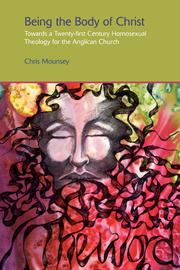Conclusion: Blindness and Insight – Some Reflections
Summary
The previous chapter attempted to draw out Winterson's theology of the body that lies between the postmodern, in which everything is language, and the scientific, in which everything is reduced to fact or discarded as irrelevant, and the traditional religious, in which the world is only to be revealed in and after the passing of time and the fulfilment of a prophecy. The theology of the body was also introduced as the gift of the homosexual writer to the heterosexual world as its revelations broke down heteronormal expectations and objectification. In this final section I want to explore the theology of the body and its implications in my daily life rather than simply in my reading of Winterson's novel.
We begin from Winterson with the idea that there is a perceiver who exists in relation with the world but who is not limited by the traditional idea of perception. In the act of visual perception as traditionally understood, the eye grasps an image of the world or of another person and objectifies it. What is seen becomes a perspective, and thus I regard it as ‘an object of my vision’, ‘my book’, ‘my wife’. In Winterson's reformulation, the perceiver, at certain times, feels the revelation of a higher truth: the co-creation of the ‘my’ (the knowledge of the self as appercipient) and the object perceived in the moment of perception, which interaction suggests a debt owed by the ‘my’ to the object of perception.
- Type
- Chapter
- Information
- Being the Body of ChristTowards a Twentieth-Century Homosexual Theology for the Anglican Church, pp. 216 - 227Publisher: Acumen PublishingPrint publication year: 2012



